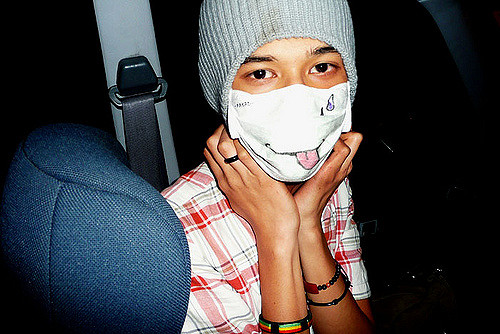
*Editor’s Note: No website is designed to, and can not be construed to, provide actual medical advice, professional diagnosis or treatment to you or anyone. Elephant is not intended as a substitute for medical or professional advice, care and treatment.
When did cleanliness stop being good enough for us?
I am a bit overwhelmed with the extent of sanitisation I see all around me.
Everywhere I go, I am surrounded by buildings and people obsessed with sanitisation. Don’t get me wrong—I am not promoting filth. But I see a huge difference between keeping things clean and making them sterile. Clean bodies sustain life; on sterile surfaces, nothing survives.
I heard a narrative about the life of planet Earth recently given by The Health Awareness Center (THAC) in Mumbai. The speaker narrated a beautiful analogy: spread your arms out and consider the length from one end of your fingertips to the other end to be the lifespan of planet Earth.
If Earth was formed at the fingertips of your right hand, then at about your right elbow, the first microbes were born. They survived millions of years since and learnt to hibernate and live in spores, waiting for the right environment to come to “life” and multiply. At about your left wrist is where the first mammals were seen on Earth. And at the very end, at your left fingernails came the existence of humans. In fact, complex life on Earth happened because of the very first microbes that live at the bottom of our water bodies. They managed to breakdown H2O into separate molecules of hydrogen and O2, thereby releasing life-giving oxygen into the atmosphere.
What was even more interesting in that talk, was the fact that a worm’s coding consists of approximately 20,000 DNA. A rice plant has about the same. One would expect that a complex organism like a human body would have many more times that number. Imagine our surprise when we discovered that the human body is coded with just about 22,000 DNA only!
How then are we able to get the instructions to do all the complex tasks that our body is capable of doing every second, every minute and every hour of each day?
The answer is simple and almost laughable. We outsource these tasks to microbes! We invite them to make a home in our body and we offer them food and shelter—not much different to our live-in house help, who in return cooks and cleans for us and takes care of our needs.
The biggest such microbial sub-world that lives inside us has made home in our gut. The term “gut feeling” is a real signal given by these very microbes to our brain directly through a nerve which keeps our brain informed of what’s happening on the inside through appropriate filters. These microbes run many functions for us and aid our immune system to decide who is a friend and who is a foe.
Of course, not all microbes are friends, but our bodies know how to run their “country” well and these microbes are welcomed into the body with complete trust that they will know how to govern themselves like a true democracy does.
The problem in this nearly perfect explanation begins when instead of helping our little friends by keeping ourselves and our environments clean, we begin to sanitise them. A sterility treatment definitely kills the “bad germs” but with it, kills a host of “good, necessary” ones too. Like any system that shows a low level of tolerance toward others, sooner or later, this intolerance backfires and attacks itself from within, thus creating havoc inside. Auto-immune diseases, allergies, asthma, OCD, ADHD, IBS and many others are a result of this internal intolerance.
When a baby is in his mother’s womb, he is the most sterilised at that time. Right from the birthing process to early childhood, the child’s body has an important job to do: collect and develop the right gut flora that enables his systems to outsource all his necessary functions, fight infections and develop properly. How does a child do that? Through contact—with caregivers, objects, surfaces and other children. Every contact is an opportunity to gain some microbes and allow them to settle into the child’s system at their appropriate place.
Ever wonder why a toddler wants to put everything into his mouth? It is an instinct designed to help him collect the appropriate gut flora he needs to enable digestion of complex foods. Ever wondered why our children can’t eat food straight after birth? It’s because they don’t have the necessary body of microbes that can assist them in digestion. Babies need four to six months of contact and initiation into the microbial world in order to hire these helpers.
Now imagine the scenario where instead of helping them in this necessary task, we impair it with sanitisation. Before we pick up a newborn, we use a hand sanitizer. We limit people from touching our newborns by keeping visitors away. We keep young babies confined to homes and rarely venture outside with them. We sanitise everything—from milk bottles to their clothing to their beds and their rooms. We make it difficult if not impossible for their bodies to interact with microbes. Then we vaccinate them. We introduce really difficult microorganisms into their delicate systems, without enabling them with the tools to deal with this attack. They struggle, fall sick and are cranky—we call this colic and pump more medicines into them to numb their system which is anyways struggling to cope.
Months go by and a toddler begins to crawl and touch things. We stop him from developing memories through touch. We decide what is appropriate for his touch and what isn’t. Soil and mud isn’t, sanitized plastic toys are; crawling around the floor on his knees isn’t, rolling on his clean baby mat is. We sterilise our homes with a range of chemical products and take sanctity in the fact that many of them are organic and expensive! We pride ourselves on keeping our child clean and presentable at all times, and we chide the nanny should he appear unkempt.
We are also choosy about the foods we give to the child, thereby limiting his gut’s exposure to all food types. As a result of all this, in this important first year, the child’s body struggles to make the microbial friendships it needs to develop a strong immune system and the right balance in his gut world.
Between the ages of two to five, we may begin to notice allergies, skin conditions, asthma, low tolerance to foods, tummy trouble and a higher frequency of falling sick with virus and bacterial infections. In trying to do the right thing, we do the wrong things right. We pump antibiotics and sometimes, even steroids into the child’s body, often many times a year.
We react to what’s urgent, not what’s important.
Every time a child’s body has to go through a round of antibiotics or a steroidal treatment, his body has to start the job of collecting and inviting microbes into his gut all over again, like a clean slate. Every time he struggles, his system becomes weaker than before.
In early childhood, the child may develop “tendencies”—of tummy trouble, of skin-trouble, of breathing-respiratory trouble and the like. We continue to manage their symptoms rather than treat the root cause. As we continue to kill the range of microbes from the child’s system, we replace them with unwanted microbes—the ones that lead to fat storage and storage of toxins, and in their teenage years, we see this manifesting in their bodies.
Then for the rest of our adult life, we find ourselves “managing our tendencies” through a combination of medication and “lifestyle changes,” with an increasing level of difficulty and frustration. We become so good at doing the wrong things right in healthcare. We convince ourselves with statistics, medicines and case histories. When we make mistakes we correct them with even more intervention.
When did killing germs enter life’s manifesto for being healthy?
When did we become so vain and overconfident in our superiority as a species that we completely ignored the pure science of numbers and the timeline of survival. Do we really think that we can kill these microbes that have survived millions of years on Earth before us, and in all likelihood, will continue to survive after us too?
I am not a medical doctor, but with many years of being a parent and exploring the complexities of human physiology out of personal interest, I find it difficult to take this lightly. When did a bit of dust, some pollen in the air, or some wind in your face while in the car stop being normal and healthy?
I just cannot see sanitisation as the same thing as cleanliness. Give me a little bit of earth, mud, grass and a cool breeze, and I call that a clean and friendly environment to be in.
References:
The Health Awareness Center (2016, April). Microbes in the gut. Speech presented by Anju Venkat and Team at Bandra, Mumbai, Maharashtra.
Author: Madhuri Kudva
Editor: Catherine Monkman
Image: Neys fadzil/Flickr






Read 0 comments and reply